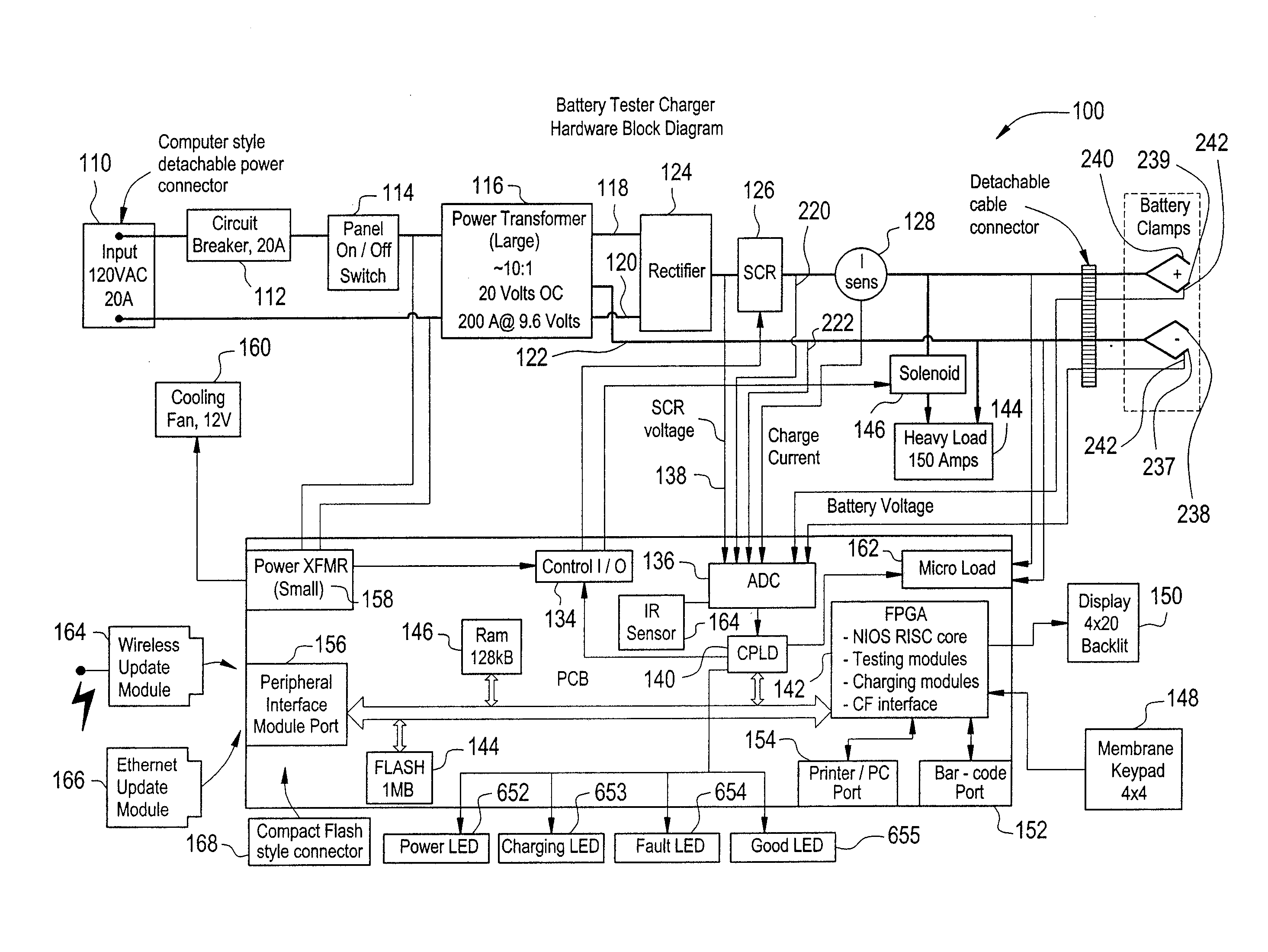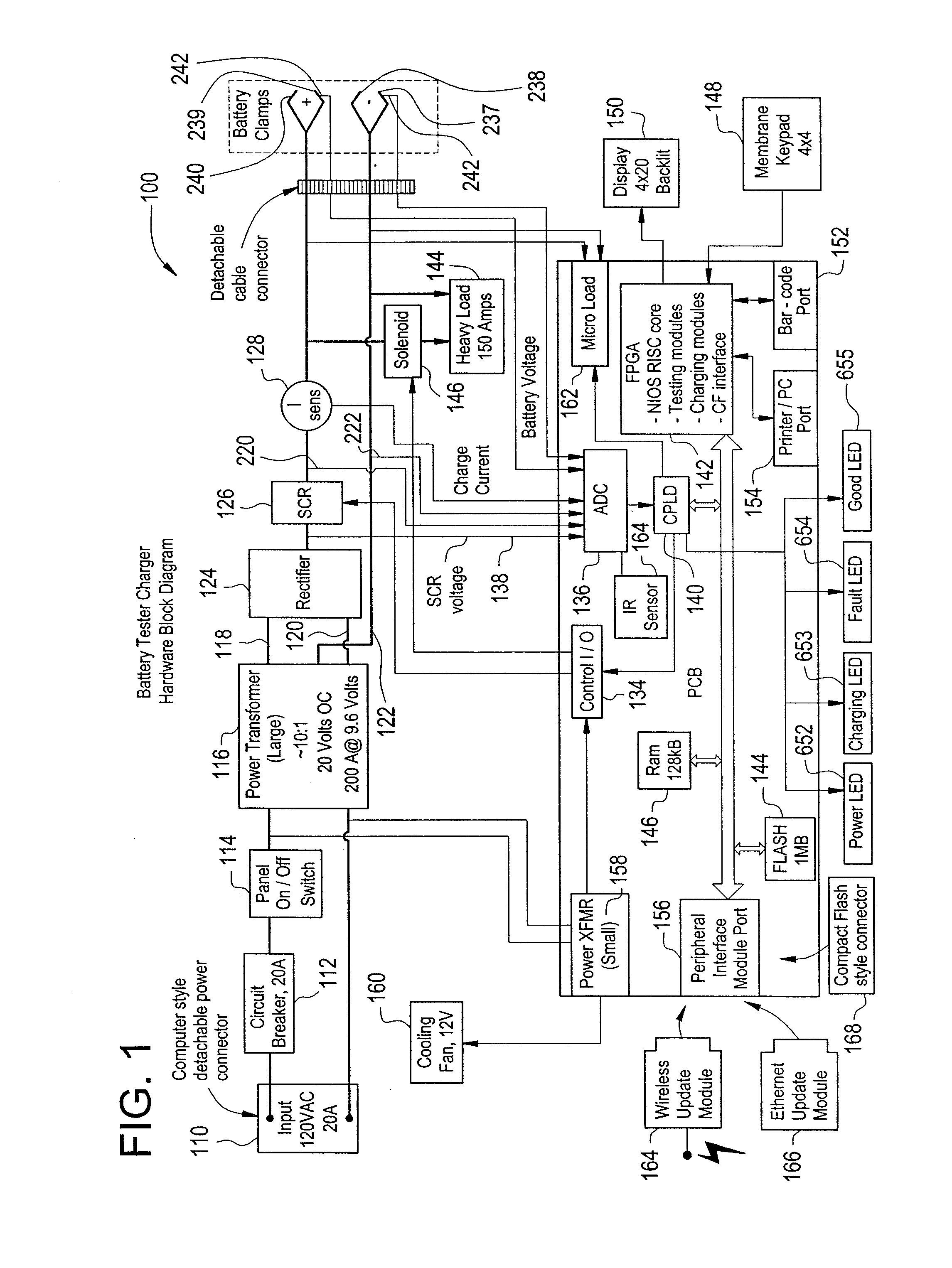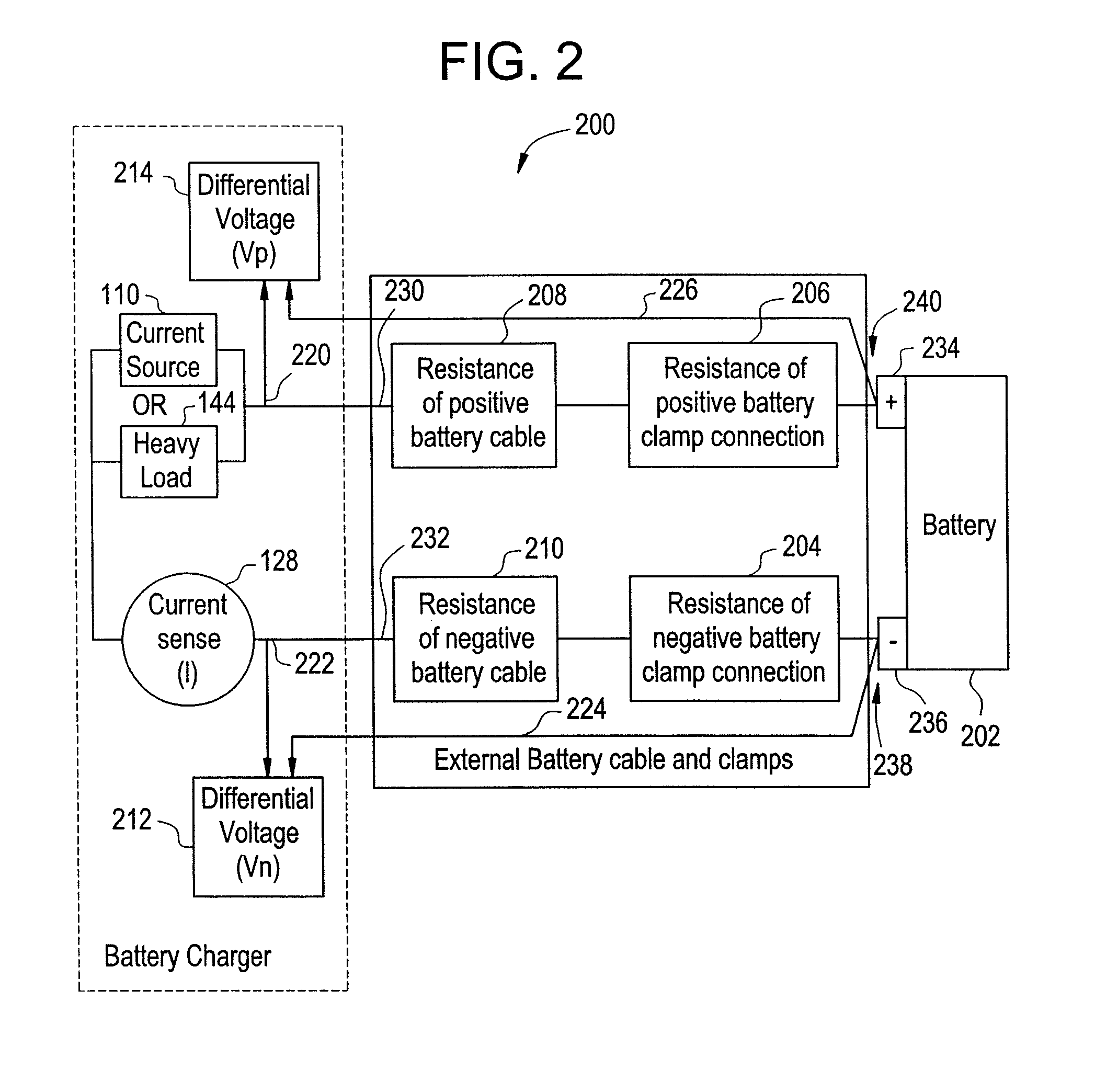Apparatus and Method for Testing a Power Source
a power source and apparatus technology, applied in the field of apparatus and methods for charging and testing batteries, can solve the problems of lead-acid batteries and other types of batteries, poor recharging control in conventional chargers, and depletion of power of lead-acid batteries
- Summary
- Abstract
- Description
- Claims
- Application Information
AI Technical Summary
Benefits of technology
Problems solved by technology
Method used
Image
Examples
Embodiment Construction
[0022]The present invention relates a battery charger / tester with a temperature sensing device for detecting the temperature of a battery being tested and charged, as well as, detecting the temperature of the battery / charger itself.
[0023]FIG. 1 is an embodiment of the current invention. The battery charger / tester 100 (“charger 100”) can include a power source 110 that provides a 120V (volts) AC (alternating current) to the charger 100. A circuit breaker 112 is provided to prevent damage that can be caused by a sudden power surge or a short in the system. A power switch 114 is linked to the power source 110 to enable the operator to turn the charger 100 on or off.
[0024]A power transformer 116 is provided to step down both the voltage and current to a level that enables the charger 100 to charge and / or test a battery. In a preferred embodiment, the power source 110 supplies the charger 100 with 120V AC. The power transformer 116 reduces the 120V AC to approximately 20-25V AC, which is...
PUM
| Property | Measurement | Unit |
|---|---|---|
| voltages | aaaaa | aaaaa |
| voltages | aaaaa | aaaaa |
| power source test | aaaaa | aaaaa |
Abstract
Description
Claims
Application Information
 Login to View More
Login to View More - R&D
- Intellectual Property
- Life Sciences
- Materials
- Tech Scout
- Unparalleled Data Quality
- Higher Quality Content
- 60% Fewer Hallucinations
Browse by: Latest US Patents, China's latest patents, Technical Efficacy Thesaurus, Application Domain, Technology Topic, Popular Technical Reports.
© 2025 PatSnap. All rights reserved.Legal|Privacy policy|Modern Slavery Act Transparency Statement|Sitemap|About US| Contact US: help@patsnap.com



